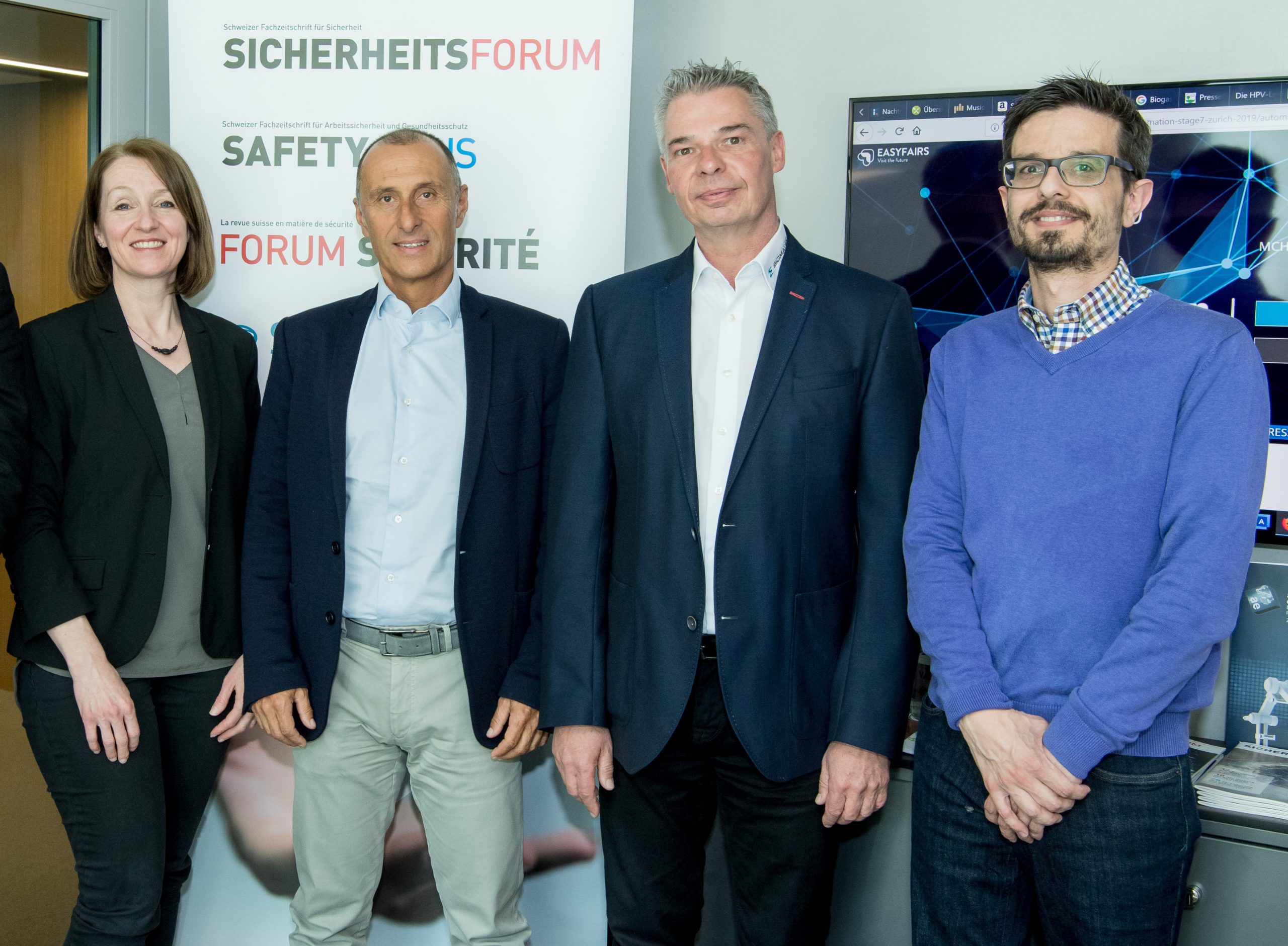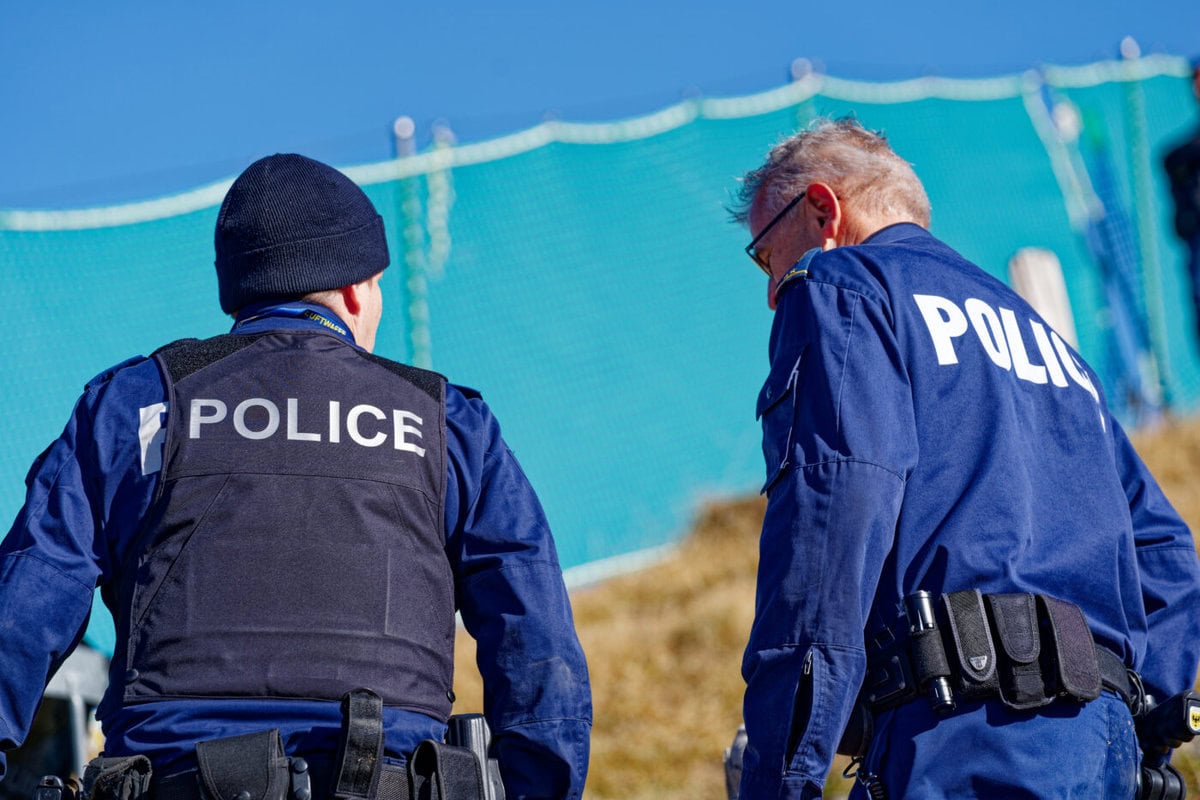Safety in automation
On the occasion of the "automation & electronics 2019" trade fair, the editorial team asked three industry representatives how the topic of "safety" is practiced in automation technology and what opportunities and risks should be considered here.

Automation), Beat Meili (Sigmatek) and Stefan Meier (Easyfairs). Photo: Chris-Silas Häfliger / Inoveris
What is the current status of "Industry 2025"?
Paolo Salvagno, Managing Director B&R Industrie-Automation AG: We have been active in this field for years and also have corresponding products. In the future, we will increasingly offer applications in the area of cloud solutions, which is very important for digitization. So we are on course for Industry 2025.
Beat Meili, Managing Director Sigmatek Schweiz AG: Industrie 2025 provides a so-called Quick Starter, a kind of guide on how to familiarize oneself with the topic of Industrie 4.0. In addition, on-site visits to SMEs are carried out with the community to show how they have implemented the topic (www.industrie2025.ch).
Can you say something about the risks?
Salvagno: I would rather talk about challenges. Most of the time, IT, specifically IT security, is a challenge. The issue here is how to transfer the data securely to the cloud. Many users are not clear where the cloud is, where the server is. The fear of data misuse is great. Depending on the architecture, a cloud can be located on the machine itself, it can be housed in the process, or it can be located at the end customer. Companies should answer this question together with their end customers.
How do you protect your machine and also work with the cloud?
Meili: Today's customers expect a control provider to provide a secure overall solution: from the control to the cloud. We ensure security, for example, by offering VPN tunneling in combination with SSL encryption on the programming port of the controller. This means that we provide a secure connection to the cloud. The storage location itself can be within the machine, the building or externally in the cloud. It is also important that the cloud operator is reputable.
Do you check your systems with hacker tests each time?
Salvagno: The software codes we have on the controller are very well encrypted and difficult to hack. On the cloud level, we run tests virtually every day. This is part of the software and architecture development that we are constantly optimizing. In terms of security: We use the same encryption mechanisms that are used for online banking.
The Internet of Things (IoT) is in vogue. Are (security) standards still missing here?
Meili: When we talk about control technology, standards now exist: For communication with the cloud, it is the MQTT client-server protocol; within production plants, it is OPC UA technology; in the future, it will be OPC UA in combination with a TSN layer. So far, this is on the right track. Where it gets difficult is with the low-cost IoT components; there is a real proliferation here. That's why it's very important to administer the whole thing clearly in order to know which participants are in the entire IoT network with which tasks, rights and identities.
So these IoT interfaces are gateways for hackers.
Salvagno: It always depends on how these interfaces are integrated in the network. We, too, are clearly relying on the standards mentioned by Mr. Meili, which will hopefully be used very quickly in all the control manufacturers' products. There are already solutions that guarantee a secure data connection thanks to Secure Remote Maintenance.
Keyword artificial intelligence. Is there a threat of losing control or do we have everything under control? Will we soon have to be afraid of robots?
Salvagno: I think we have to see it as an opportunity, like autonomous driving, for example. AI is also being applied here; it's better than human responsiveness. Healthcare and automation are other areas for AI applications. Basically, we are positive about the subject and our research and development department is looking into it. AI cannot be stopped, which is why certain laws against misuse are still needed here and there.
Tamara Dickel, Marketing Manager Phoenix Mecano Komponenten AG: I agree - this development cannot be stopped. For me, it's about fundamental questions: Who is behind AI and what does it mean for society? We in the industry are significantly involved in the development, because we implement this technology. In addition to the positive effects of this application, I think it is important for the legislator to establish certain regulations.
Meili: I may be a little conservative in this respect, but I do see a certain danger in AI. Artificial neural networks (ANNs) act in a self-learning or self-optimizing manner, and something could get out of hand. That is why the safety aspect must be clearly in the foreground. AI is also being implemented in industrial automation. In plastic injection molding machines, for example, productivity can be increased thanks to AI. However, if something goes wrong and an injection molding tool is damaged, it quickly costs more than 100,000 euros. A company must be aware of this.
Where do you use safety control technology?
Salvagno: In automation, this is state of the art today and the standards are very high. Instead of one processor, for example, our solutions have three processors that constantly check each other.
Meili: Originally, there were standard controls on the one hand and safety components on the other. In recent years, these two worlds have grown together as control manufacturers have implemented integrated safety solutions. The advantage of this is that safety can communicate directly with the standard control via the bus system. This also eliminates the need for additional auxiliary wiring. All this is standard today. In time, there will be practically no more standard controls with integrated safety. In the future, controls will simply be safe - also because component prices have fallen. The price difference between a safety and a non-safety output card is very moderate today.
What is the outlook for the 5G mobile communications standard, and what opportunities and risks do you see?
Salvagno: I think that's where we're dependent on the providers implementing 5G. We will automatically deploy this with our customers - as soon as 5G is available. In my view, the opportunities and risks are the same as with 4G. But we have to look at the mechanisms for security reasons.
3G, 4G or 5G - is that at all relevant for you as an automation specialist in terms of data transfer rate?
Salvagno: There is WLAN, LAN, and there will soon be 5G. Depending on where the customers have their machine, there may be no Internet or no WLAN connection. At best, they need a 4G or 5G connection so that they can collect data from the machine at all. And the sooner this can be provided and the faster the data rate, the sooner 5G will be used. There's not going to be anybody opposed to being able to do faster downloads or upgrades on the spot. That's where people are happy to have access to this control with a very fast data rate.
How is your company addressing the issue of 5G?
Dickel: As a producer of special enclosures, we are actually excited to see what new possibilities 5G will bring. What services and products will emerge from it? Where can we support our partners as a supplier of components? Basically, however, it is not the case that we are currently preparing specifically for the larger data volumes with 5G.
Meili: For us, 5G means the chance to close the last construction site in a modern factory. If you walk through modern production halls today, you will notice that there are expensive, highly automated machines, but the flow of goods is still managed by hand. We see a great need for automation here and have therefore built up a lot of expertise in the field of safe automation of automated guided vehicles (AGVs) in recent years, especially since one of Sigmatek's managing directors founded a company that produces AGVs four years ago. One of the difficulties with these vehicles is finding your way around factory floors with people traffic - all the safety aspects are at stake here. From 5G, we expect faster response times and faster data exchange, so that we have the necessary data on the mobile transport systems practically in real time.









